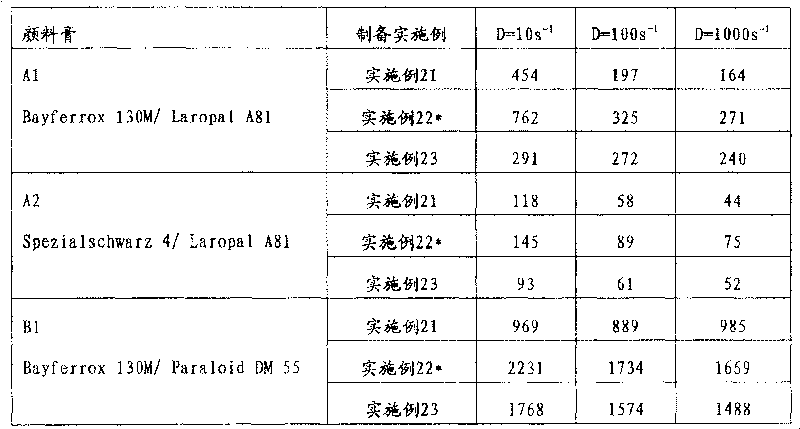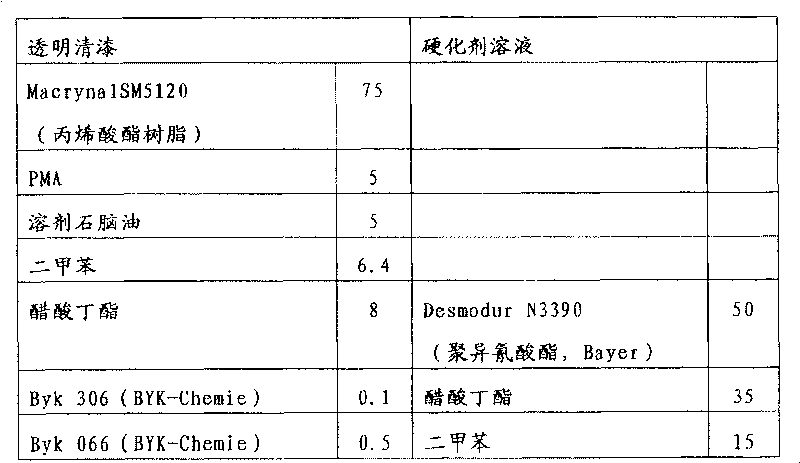Addition compositions suitable as dispersants and dispersion stabilizers
A technology of addition compounds and compounds, applied in chemical/physical processes, transportation and packaging, chemical instruments and methods, etc., which can solve the problems of lack of space shielding and inability to fully ensure the stabilization of dispersed particles and solids
- Summary
- Abstract
- Description
- Claims
- Application Information
AI Technical Summary
Problems solved by technology
Method used
Image
Examples
Embodiment
[0127] In the following the invention will be illustrated by way of examples. In the case of substances without molecular homogeneity, the molecular weights stated below represent the mean values of the number averages (which otherwise apply to the entire specification unless otherwise stated). The molecular weight, as well as the number average molecular weight Mn, can be determined by standard methods, for example by determining the OH number or amine number, using the freezing point depression method, or by gel permeation chromatography. Parts are parts by weight and percentages are percentages by weight unless otherwise noted. The free NCO content of the polyisocyanates used and the course of the NCO addition reaction were determined according to EN ISO 9369 by reaction with butylamine and subsequent titration of the excess amine. These methods are also described in Saul Patai, "The Chemistry of Cyanates and their Thioderivates", Part 1, Chapter 5, 1977.
[0128] Hydro...
preparation Embodiment 1
[0164] a) Add 4.2 parts of polyvinylamine, Mn about 2000 (eg Epomin SP018, Nippon Shokubai) into a reaction vessel with reflux condenser and stirrer, and heat the initial charge to 90°C. Once this temperature has been reached, 43.8 parts of uretdione-comprising precursor intermediate I1 are added. The reaction may be somewhat exothermic, but cooling is not required; the energy released is used to accelerate the reaction. At a defined temperature, the reaction mixture is stirred until the uretdione addition reaction is substantially complete. The reaction can be controlled according to the number of amines: about 27% of the amino groups present are reacted.
[0165] b) When the amine number has dropped to 63% of the original number, react the other 25% of the original amino groups by adding 2 parts of ethylhexyl glycidyl ether and stir for about one hour more while maintaining the temperature until the ring The oxygen groups have substantially reacted. The progress of the re...
preparation Embodiment 37
[0202] For the purpose of salt formation, to 100 g of the adduct prepared according to Example 4, 16.9 g of tall oil fatty acid (acid value: 195 mgKOH / g) was added, and the mixture was stirred at 50° C. for 20 minutes. The resulting salt had an acid value of 28 mgKOH / g and an amine value of 28 mgKOH / g.
PUM
| Property | Measurement | Unit |
|---|---|---|
| Functional group degree | aaaaa | aaaaa |
| acid value | aaaaa | aaaaa |
Abstract
Description
Claims
Application Information
 Login to View More
Login to View More - R&D
- Intellectual Property
- Life Sciences
- Materials
- Tech Scout
- Unparalleled Data Quality
- Higher Quality Content
- 60% Fewer Hallucinations
Browse by: Latest US Patents, China's latest patents, Technical Efficacy Thesaurus, Application Domain, Technology Topic, Popular Technical Reports.
© 2025 PatSnap. All rights reserved.Legal|Privacy policy|Modern Slavery Act Transparency Statement|Sitemap|About US| Contact US: help@patsnap.com



